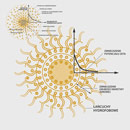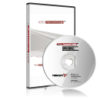The integration of technology into cycling has transformed how enthusiasts engage with their passion. With the rise of GPS devices, riders can now easily track their routes, distances, and altitudes, gaining insights into their rides like never before. These tools not only enhance navigation but also add an element of adventure to every ride, allowing cyclists to explore new terrains without the fear of getting lost.
Another significant advancement is in performance tracking. Modern cycling apps and devices allow riders to monitor their speed, heart rate, and overall statistics, providing valuable data that can inform training decisions. This information empowers cyclists to push their limits, making each session more productive while also ensuring they stay within safe exertion levels.
Additionally, a plethora of training tools are available to cyclists looking to improve their skills and endurance. From structured training plans to smart trainers that simulate various terrains, technology offers an array of options to enhance fitness levels. Engaging with these tools can lead to noticeable gains, transforming the way cyclists perceive their physical capabilities.
Utilizing Cycling Apps for Route Planning and Tracking Progress
Cycling apps serve as valuable training tools, providing cyclists with the means to plan routes and monitor their progress effectively. These applications often feature interactive maps, allowing users to discover new trails, scenic paths, or challenging climbs. By inputting starting and ending points, cyclists can receive optimized routes tailored to their preferences, ensuring a rewarding experience on two wheels.
In addition to route planning, many cycling apps integrate seamlessly with GPS devices. This integration enhances accuracy in tracking key metrics such as distance, speed, elevation gain, and calories burned. With real-time updates, cyclists can stay informed about their performance, making it easier to set and achieve personal goals.
Tracking progress over time can motivate cyclists to improve their fitness levels. Many apps provide analytics and visualizations, displaying trends in performance metrics that help cyclists identify strengths and areas for improvement. This data-driven approach not only enhances the training experience but also builds a deeper connection to the cycling journey.
For those looking to enhance their cycling experience further, consider exploring the insights available at https://bgradecyclist.com/ for additional tips and resources.
Incorporating Wearable Devices for Health Monitoring During Rides
Wearable devices have transformed how cyclists monitor their health while riding. These gadgets provide real-time data, enabling cyclists to keep track of their heart rate, calories burned, and overall exertion levels. By integrating these devices with cycling apps, users can receive comprehensive insights into their performance, helping to refine their riding strategy and improve fitness levels.
GPS devices play a key role in enhancing this experience. They not only help in tracking routes but also allow for monitoring speed and distance, providing a complete fitness snapshot. Wearable technology can synchronize with these GPS devices to present a cohesive view of both performance analytics and health metrics.
Additionally, many wearables come with features like sleep tracking and recovery monitoring, which are beneficial for overall fitness. By analyzing trends in these metrics over time, cyclists can make informed decisions about their training intensity and recovery needs, ultimately leading to improved performance and enjoyment on every ride.
Leveraging Smart Bike Accessories for Improved Performance and Safety
Integrating smart bike accessories into your cycling routine can significantly enhance both performance tracking and safety. These innovative tools are designed to provide real-time data, making it easier to monitor your progress and adjust your training regimen accordingly.
Many smart bicycles come equipped with built-in GPS devices that track distance, speed, and route data. This allows cyclists to analyze their rides in detail and identify areas for improvement. Some GPS devices also offer features like navigation, ensuring you stay on course, even in unfamiliar territory.
Training tools such as power meters and cadence sensors are invaluable for serious cyclists. These accessories measure the power output during pedaling, helping you understand your efficiency and identify optimal pacing strategies. Additionally, cadence sensors can assist in refining your pedal stroke, promoting better energy management throughout your rides.
Safety is another critical aspect where smart accessories shine. Smart lights, for instance, enhance visibility during low-light conditions and can even sync with your bike's movement to adjust brightness automatically. Wearable devices equipped with accident detection features can send alerts to emergency contacts in case of a fall, providing peace of mind while exploring new routes.
Incorporating these smart accessories not only contributes to improved performance but also enhances safety on the road, allowing you to focus more on enjoying the ride.












